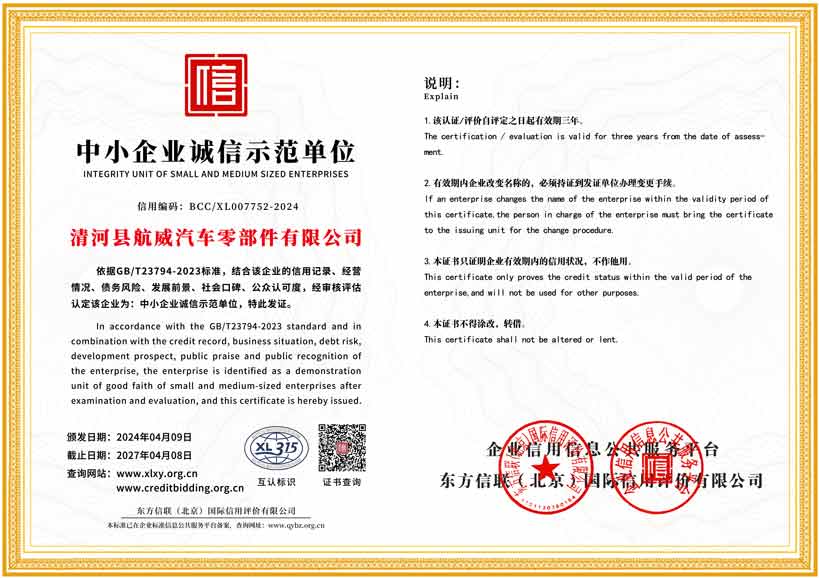broken gear shift cable
The Implications of a Broken Gear Shift Cable Insights and Solutions
In the operation of any vehicle, the transmission system plays a crucial role in converting the engine's power into motion. A pivotal component in this system is the gear shift cable, which connects the gear shifter to the transmission. Unfortunately, a broken gear shift cable can lead to significant issues for drivers, impeding vehicle performance and safety. This article delves into the causes, symptoms, and solutions for a broken gear shift cable, providing drivers with the knowledge to address this automotive concern effectively.
Understanding the Gear Shift Cable
The gear shift cable is designed to facilitate the smooth transition of gears. When the driver shifts the gear lever, the cable transmits this action to the transmission, allowing the vehicle to change gears smoothly. Over time, however, wear and tear can take a toll on the cable, leading to potential failures. Common materials used in the construction of these cables include durable metal and plastic, but exposure to moisture, dirt, and extreme temperatures can significantly reduce their lifespan.
Signs of a Broken Gear Shift Cable
Recognizing the signs of a broken gear shift cable is essential for any driver. One of the most noticeable symptoms is difficulty in shifting gears. If the gear lever feels stiff or becomes unresponsive, it may indicate that the cable is damaged. Additionally, drivers may experience erratic shifting, where the vehicle unexpectedly changes gears or fails to engage a particular gear altogether.
Another telling symptom is a disconnected gear shifter, where the lever moves without a corresponding action in the transmission. This disconnection can make it impossible to change gears properly, putting the driver at risk, especially in critical driving situations like merging onto highways or navigating steep hills.
In some cases, drivers may also notice unusual noises coming from the transmission area, including grinding or clicking sounds when attempting to shift gears. This not only reflects a malfunction in the gear shift cable but could also indicate further issues within the transmission system itself.
Causes of Gear Shift Cable Failure
broken gear shift cable

Several factors can contribute to the failure of a gear shift cable. One of the most common causes is prolonged wear due to regular use. Over time, cables can fray, weaken, or corrode. Exposure to harsh environmental conditions, such as salt from winter roads or excessive moisture, can accelerate this process. Additionally, improper installation or misuse of the gear shifter can place undue strain on the cable, leading to premature failure.
Addressing a Broken Gear Shift Cable
For drivers facing symptoms of a broken gear shift cable, addressing the issue promptly is crucial. Ignoring the problem can lead to more severe transmission damage and costly repairs. The first step is to take the vehicle to a qualified mechanic who can diagnose the issue accurately. A professional will typically inspect the cable for signs of wear or damage and determine if repair or replacement is necessary.
In many cases, replacing a broken gear shift cable is a straightforward process. Depending on the make and model of the vehicle, the mechanic will typically replace the damaged cable with a new one and ensure it is installed correctly. Regular maintenance checks can help in identifying potential issues before they escalate, allowing for timely interventions.
Preventive Measures
To prolong the lifespan of a gear shift cable, drivers can take several preventive measures. Regular maintenance, including protecting the cable from dirt and moisture, can significantly decrease the likelihood of failure. Moreover, ensuring that the gear shifter is operated smoothly and within its designated range can minimize wear and tear.
Conclusion
A broken gear shift cable can be a significant inconvenience for any driver, impacting both vehicle performance and safety. By understanding the signs of failure, the causes behind it, and the necessary steps to address the issue, drivers can take proactive measures to maintain their vehicles effectively. It is essential to prioritize regular maintenance and address any symptoms promptly to ensure a smooth and safe driving experience.
-
Workings of Clutch Pipe and Hose SystemsNewsJun.04,2025
-
The Inner Workings of Hand Brake Cable SystemsNewsJun.04,2025
-
The Secrets of Throttle and Accelerator CablesNewsJun.04,2025
-
The Hidden Lifeline of Your Transmission Gear Shift CablesNewsJun.04,2025
-
Demystifying Gear Cables and Shift LinkagesNewsJun.04,2025
-
Decoding Clutch Line Systems A Comprehensive GuideNewsJun.04,2025
